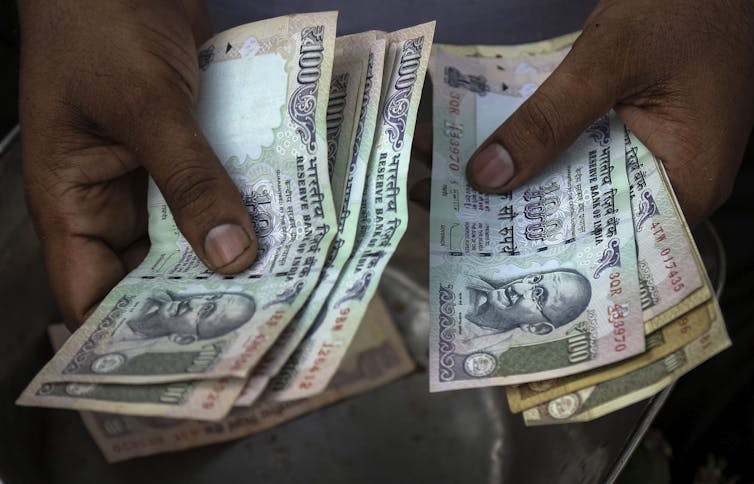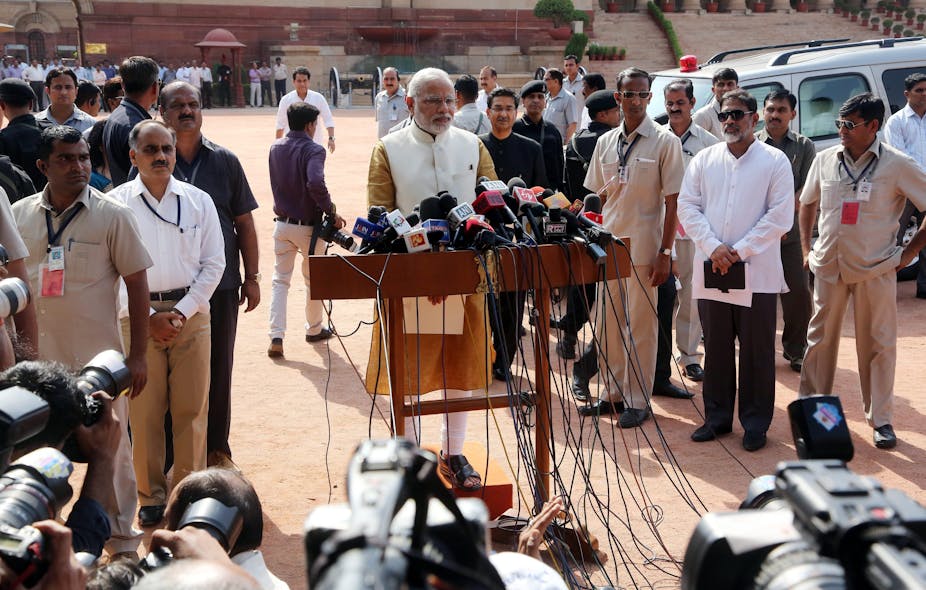India’s new prime minister, Narendra Modi, won in a landslide off the back of a campaign that very much focused not only on his personality, but also on his success as Gujarat’s chief minister for more than a decade.
Modi promised to replicate this “Gujarat model” across the whole of India, implying the kind of success his state has seen would work on India’s large, diverse scale. But would it?
How does the ‘Gujarat model’ work?
One of the problems with the Gujarat model is that it’s not much of a model. It is an attitude, a leadership style, even an ideology. But the model itself is somewhat more difficult to discern.
Modi has been Gujarat’s chief minister since 2001. During that time, Gujarat, by most accounts, has been a shining example of how the rest of the Indian economy should have behaved if it knew what was good for it – but didn’t, due to the now-defeated Congress government. The Gujarat scheme’s elements could be summarised as:
- a devotion to the workings of the free market and the primacy of the private sector;
- a welcoming attitude towards private investment; and
- less bureaucracy and less state intervention – except when welcoming private investment by tax concessions, investment subsidies, cheap credit, cheap land and a business-friendly labour policy.
Gujarat has had its successes, though they may not be as smashing as Modi’s election campaign might lead you to believe. Its GDP growth over the last ten years has been 10.1% on average – compared to a national average of 7.7%. Its per capita income has tripled during Modi’s term in office. It has the sixth highest share of foreign direct investment destination among Indian states as of 2012-13.
However, Gujarat’s GDP growth, which was built on a long history of industry and international trade in the state, is in line with comparable states like Maharashtra, Tamil Nadu and the union territory of Delhi. The foreign investment that has come has tended to concentrate in the areas of chemicals and petro-chemicals. These are areas of low employment.
In terms of human development, Gujarat performs badly in redistribution of income, health, nourishment and education. It may be a haven for private investment, but in 2011 Gujarat was 15th among the states in safe water access. And in 2012, Gujarat’s infant mortality rate was the 23rd-worst among the 28 Indian states.
The contrast between economic growth and human development might be explained by the extent to which the state in Gujarat, having put out the welcome mat, withdrew from economic policy and priority-setting, and left it to the private sector. As India expert Shipra Nigam explained:
Key sectors – traditionally held to be the preserve of the state – such as ports, roads, rail and power have been handed over to corporate capital. This has meant, inevitably, that the government has abdicated all decision-making powers, as well as functional and financial control over such projects.
Nowhere else in the country has this abdication of responsibility been so total, nowhere else has the state given over the economy so entirely to the corporates and private investors.
Hindu nationalism and the Gujarat model
Given the size of the Modi-led Bharatiya Janata Party’s (BJP) majority, it will probably govern with minimal interference from its electoral allies. The BJP is traditionally the party of the Hindu-nationalist right. It functions as a constant assertion of the majority religious community’s superiority over minorities – and over Muslims in particular.
The maximum popularity for this political agenda was achieved around the campaign to destroy the Babri Mosque (allegedly built at the birthplace of a Hindu deity). But once the mosque was torn down in 1992, the Hindu nationalist vote stagnated.
Something else was needed besides Hindu nationalism - something to appeal to the rising urban middle classes. That something turned out to be Modi’s version of development, and for that he pursued Indian businesses with a will.

This has not meant that the older Hindu nationalist agenda has disappeared. When anti-Muslim violence broke out in Gujarat in 2002, Modi was at the very least negligent in failing to act to suppress it. And the leaders of the far-right Rashtriya Swayamsevak Sangh (a Hindu-nationalist paramilitary outfit that lurks continually in the BJP’s backrooms) were among the first to meet with Modi as prime minister-elect.
In its enthusiasm for private investment and its approval of market forces, the Gujarat Model differs only in degree from the stated policies of the previous Congress-led government. There are, however, two differences that should be mentioned.
Firstly, despite its lurch in the direction of neo-liberalism after 1991, Congress maintained a commitment to some kind of income redistribution and poverty through projects like the Public Distribution System (PDS) and the National Rural Employment Guarantee System (NREGA), even with the decreasing effectiveness and increasing corruption of those schemes.
Indians can expect no such commitments from their new BJP government. Gujarat has been one of the worst-performing states in the PDS and has had one of the lowest rates of participation in the NREGA.
Secondly, Congress aspired to be a national and secular party: an aspiration it has not always achieved in practice. But again, there are no guarantees from Modi and the BJP on that issue.
So, if the Gujarat model is applied across India, expect a re-endorsement of free-market economics and an “open for business” sign for private investment – plus the added ingredient of right-wing Hindu nationalism.

